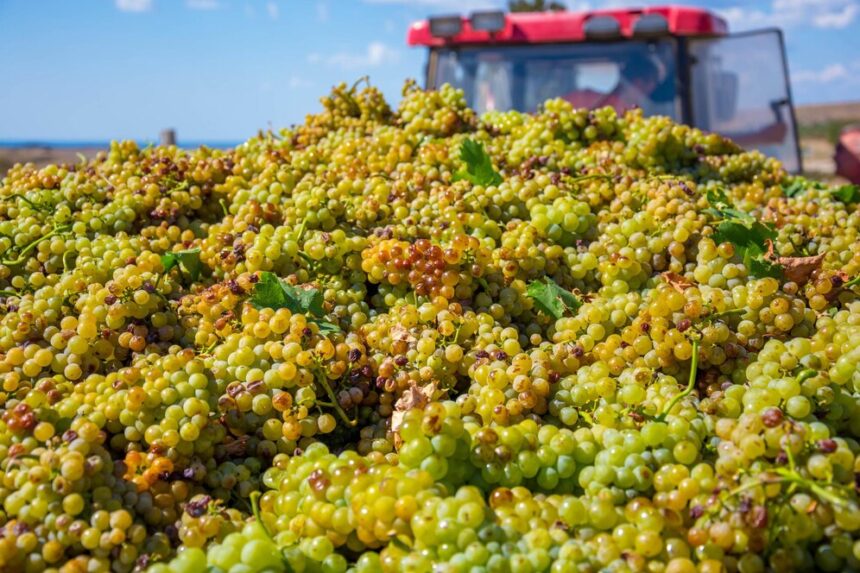South Africa is a major player in the global table grape market, exporting millions of tons of high-quality grapes to countries across the world. The country’s ideal climate, extensive agricultural expertise, and infrastructure make it a leading exporter of table grapes. However, for South African table grapes to reach international markets, they must meet specific export requirements and quality standards set by importing countries and global trade regulations. In this article, we will explore the key export requirements for table grapes from South Africa to ensure compliance and successful exportation.
1. Export Documentation and Permits
Before any table grapes can be exported from South Africa, the exporter must ensure they have all the necessary documentation and permits. This includes:
- Export Permit: An export permit issued by the Department of Agriculture, Forestry, and Fisheries (DAFF) in South Africa is required. This permit confirms that the grapes meet all national and international standards.
- Phytosanitary Certificate: This certificate, issued by the Department of Agriculture, Forestry and Fisheries (DAFF), ensures that the table grapes are free from pests and diseases. It is necessary for ensuring the product meets the plant health standards of importing countries.
- Packaging and Export Standards Certification: The exporter must also adhere to South Africa’s national packaging standards. A certification from the Perishable Products Export Control Board (PPECB) is often required, confirming that the product is in compliance with both South African and international export standards.
2. Compliance with International Standards
South African table grapes must comply with the food safety and quality regulations of the importing countries, which are often aligned with international standards like those established by the Codex Alimentarius or the International Plant Protection Convention (IPPC). Common international standards include:
- GlobalG.A.P. Certification: This certification is required by many international markets and ensures that the grapes are produced and handled following good agricultural practices (GAP). It covers aspects like pesticide usage, water management, labor practices, and traceability.
- The European Union’s (EU) Phytosanitary Requirements: The EU has strict plant health and safety standards. South African table grapes must be free from pests like mealybug, grapevine moth, and other potential pathogens that could affect the EU’s agricultural ecosystem. Grapes are also subjected to stringent pesticide residue limits.
- Maximum Residue Limits (MRLs): Table grapes must comply with the pesticide residue limits set by the importing country. For instance, countries like the USA, EU, and Japan have stringent MRLs, which exporters must meet through careful monitoring of chemical usage in the production process.
3. Quality Standards and Grading
One of the key factors influencing the export of table grapes is the quality of the fruit. South African producers must meet strict grading standards, which include factors such as:
- Size and Weight: Table grapes are graded according to size and weight, with larger, firmer, and more uniform bunches preferred. Most international buyers expect table grapes to meet high aesthetic standards, including a consistent size and minimal blemishes or defects.
- Sugar Content: Table grapes are expected to have a certain level of sweetness, typically measured by Brix (sugar content in the fruit). Grapes with a higher Brix score (around 17 to 20) are preferred for export markets.
- Color: Color is another key factor, particularly for red and black varieties. Grapes should have good color development without being overly green or under ripe, as these traits affect marketability.
- Taste and Firmness: Taste, flavor, and firmness are key quality indicators. Exported grapes should have a good balance of sweetness and acidity and a firm texture that ensures longevity during shipping and storage.
- Packaging Standards: The packaging of table grapes is crucial for preserving the quality of the fruit during transportation. Grapes are usually packed in specially designed cartons with ventilation to allow air circulation and prevent mold growth. Packaging should also ensure that the fruit is protected from damage.
4. Cold Chain Management
Maintaining the cold chain is critical for preserving the quality of table grapes during transit. Grapes are highly perishable and require a controlled temperature environment to prevent spoilage, dehydration, and fungal growth.
- Pre-cooling: After harvesting, grapes should be pre-cooled to remove field heat before packaging and export. This is usually done using forced-air cooling or hydrocooling methods.
- Temperature During Shipping: Table grapes must be kept at a temperature between 0°C and 2°C throughout the export journey. This ensures that the grapes maintain their firmness, freshness, and overall quality during the long journey to international markets.
- Shipping and Handling: Grapes should be handled carefully throughout the export process, minimizing mechanical damage. Proper storage and handling practices, including maintaining the cold chain from farm to port, are essential to ensure that the quality of the fruit is not compromised.
5. Packaging Requirements
The packaging of table grapes plays a significant role in maintaining fruit quality during export. Export packaging must comply with international requirements and should be designed to withstand the rigors of long-distance transport.
- Ventilated Boxes: Packaging must provide adequate ventilation to allow for airflow, reducing the risk of mold and moisture buildup.
- Correct Labeling: The packaging should be clearly labeled with details such as the grower’s name, farm certification details, product description (including variety), the country of origin, and the packaging date. Proper labeling is essential for compliance with international customs and food safety standards.
6. Exporting to Major Markets
South African table grapes are exported to numerous global markets, with the European Union, United Kingdom, Russia, Middle East, United States, and Asia being the largest consumers.
- EU Market: The European Union has stringent food safety regulations and compliance standards. Meeting these standards is critical for successful market entry.
- United States and Japan: The US and Japan are some of the largest importers of table grapes from South Africa. Exporters must meet specific MRLs and comply with the rigorous standards set by the USDA and Japanese Agricultural Standards (JAS).
- Africa and the Middle East: African and Middle Eastern countries have an increasing demand for South African table grapes. These markets are typically more flexible in terms of quality standards but still require compliance with basic packaging and phytosanitary regulations.
The table grape export industry in South Africa is a highly competitive and regulated sector. To successfully export table grapes, farmers and exporters must ensure that their product meets the specific requirements of each destination market, including documentation, certification, quality standards, and cold chain management.
By adhering to these standards, South African exporters can maintain access to lucrative international markets while ensuring the continued success and growth of the country’s table grape industry. Compliance with quality, health, and safety standards not only guarantees a higher success rate for exports but also bolsters South Africa’s reputation as a global leader in table grape production.
Join 'Farmers Mag' WhatsApp Channel
Get the latest Farming news and tips delivered straight to your WhatsApp
CLICK HERE TO JOIN






